Clancy Tucker's Blog, page 14
June 25, 2022
19 August 2022 - TREEHOUSE RESTAURANT IN ENGLAND
 TREEHOUSE RESTAURANT IN ENGLAND
TREEHOUSE RESTAURANT IN ENGLANDG'day folks,This giant wooden treehouse within a sprawling garden has its own eatery.
The wondrous garden anchored by the Treehouse Restaurant was once part of the official residence of the Duke of Northumberland in the 11th century. Today, the land is known as the Alnwick Gardens, a bucolic setting featured in the early Harry Potter films. For the dendrophiles among us, the arborous building at the heart of these gardens is more likely something featured in your wildest dreams.
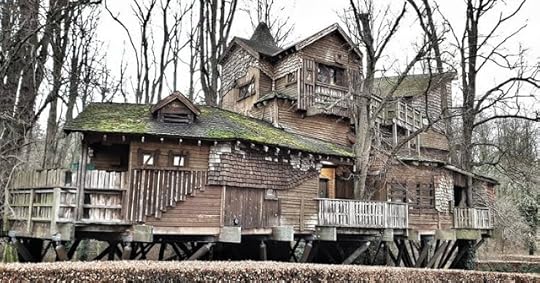
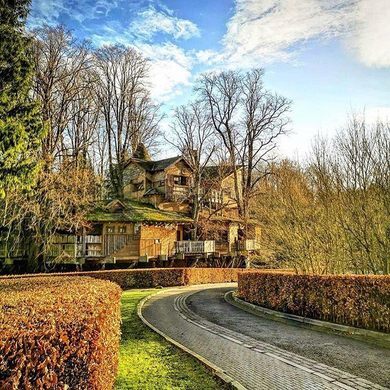
The 6,000-square-foot complex is a celebration of wood: pine, cedar, and redwood, all carefully intertwined to make a theater of natural elements suspended in the tree-line of the ancient forest. Growing trees literally spew forth from the floors while in the wintertime, a cozy fireplace lazily crackles. Need you guess what the tables and chairs are made from?
The menu boasts Northern English fare with an emphasis on seasonality and locality. While the menu reads beautifully, some diners note that execution can be spotty. Perhaps a warm drink by the fire would do a winter soul enough good.
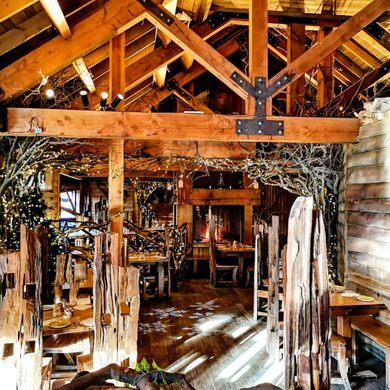
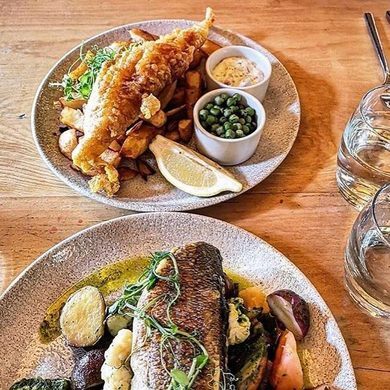
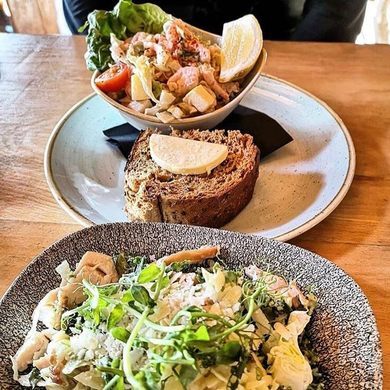

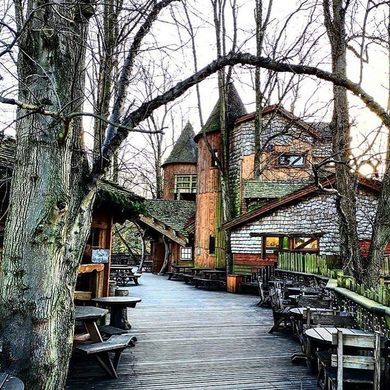
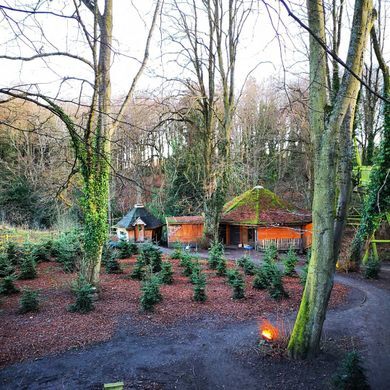
For its design alone, the restaurant is well worth a trip from nearby Newcastle. You’ll surely work up an appetite gushing over all the wood.
15 August 2022 - UNDERWATER RESTAURANT IN THE MALDIVES
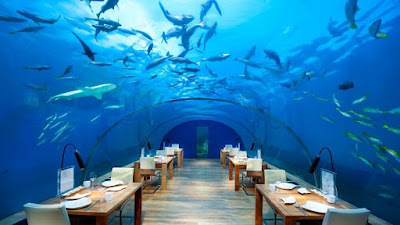
UNDERWATER RESTAURANT
IN THE MALDIVES
G'day folks,
Welcome to an underwater restaurant, surrounded by a coral reef.
To enter the restaurant, visitors climb down a spiral staircase in a thatched pavilion at the end of a jetty. They enter the building, which has a curved roof like a tunnel, from above.
Secured five meters below sea level at the Hilton Maldives Resort and Spa, the Ithaa Undersea Restaurant is a mostly acrylic building that only seats 14. Offering a 270-degree panoramic view to its customers, Ithaa was designed and constructed by M.J. Murphy Ltd., a design consultancy based in New Zealand.

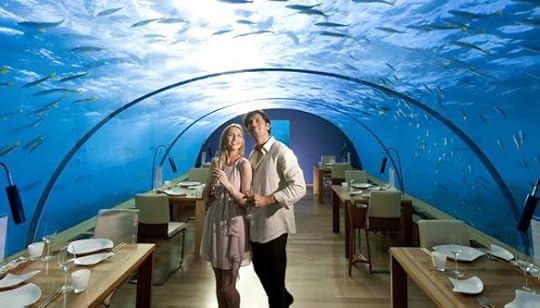
Opened in 2005, Ithaa (which means ‘mother of pearl’ in Dhivehi, the local language) charges a premium for its meals, but they might cost less than one would expect for an underwater dinner. They start in price at about $120 US for lunch for hotel guests. The restaurant serves contemporary fusion Maldivian cuisine with Western and Asian influences. Advance reservations are necessary.
Designed by the Kuala Lumpur National Science Center, the building qualifies as the world’s largest aquarium tunnel. After completion in 2004, Ithaa was taken to the Maldives on the back of an ocean-going barge. It took 16 days to arrive. It is estimated that the restaurant, which is placed in extreme conditions, will only last for 20 years.
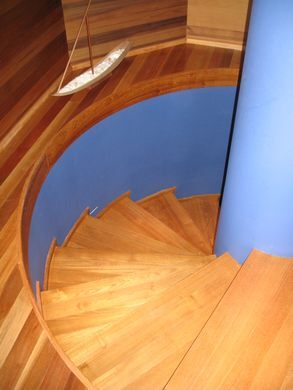
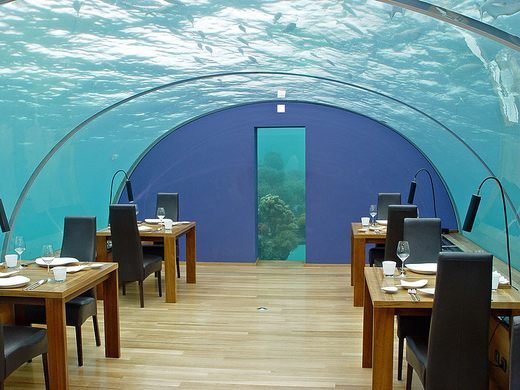

June 24, 2022
26 August 2022 - UMATILLA CHEMICAL DEPOT - OREGON

UMATILLA
CHEMICAL DEPOT
- OREGON -
G'day folks,
Welcome to a stunning landscape of bunkers that once stored chemical weapons.
Heading west to Portland, Oregon via automobile, you stand a good chance of passing by some very unusual and imposing terrain.
As you’re cruising on I-82 towards the junction with I-84 you’ll notice that you’re passing many large earth covered bunkers to the north. The dirt camouflages the bunkers, so you wonder how many have passed before you noticed them. They keep ticking by as you clock about five miles east-west. If you choose to go north on i-84, the interchange is elevated, and you can see the bunkers stretching far to the north, also about five miles.

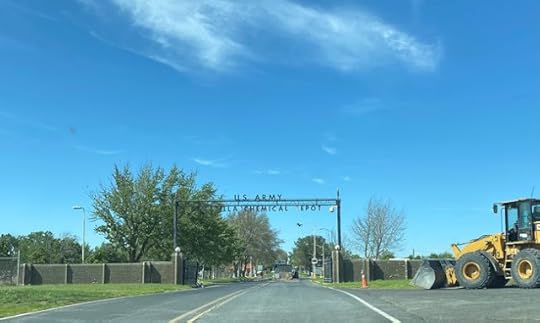
The view is not something that you can capture in a photograph. You have to experience it for yourself.
The Umatilla Chemical Depot bunkers were used as storage for WWII and Cold War era conventional ammunition of all types, as well chemical weapons such as containing GB and VX nerve agents and HD blister agent . Though the site is incredibly vast, it contained only some 12% of the US stockpile of such weapons.
By 2011 the entire stockpile was completely incinerated, and as of 2018 the entire depot itself was shutting down.
Due to its isolation and freedom from development the site has become home to rare species of birds like the burrowing owl as well as rare plant life and herds of antelope. The state of Oregon plans to use part of the base for a training facility, while the rest may becomes industrial land and a wildlife refuge.

29 August 2022 - THE 'COZY ROOMS' MUSEUM - OREGON
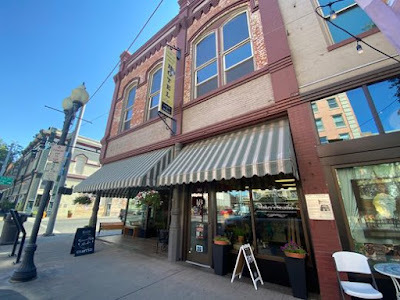
THE 'COZY ROOMS'
MUSEUM
- OREGON -
G'day folks,
A statue of the owner stands outside of this museum, once the most popular brothel in town.In 1928, Stella Darby opened her very own brothel, the Cozy Rooms, when she was still in her 20s. In the lawless Wild West boomtown of Pendleton, Oregon—filled with saloons, opium dens, and brothels—to be so respected was a feat. Situated in the bustling downtown, the Cozy Rooms was the rowdy town’s favorite brothel until it closed in 1967.
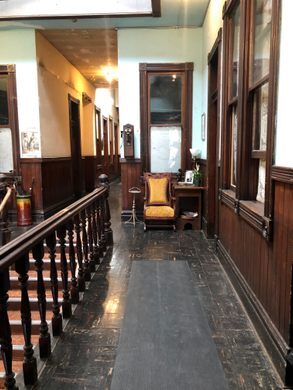
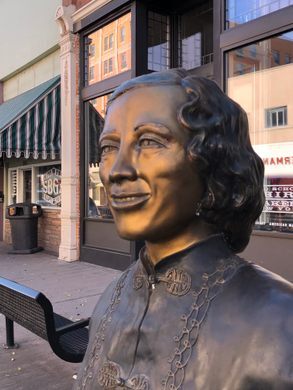
Darby was an uncommon madame. Never a sex worker herself, she encouraged the women working for her to get an education, save money, and learn etiquette so they could rise up to higher social stations. Darby successfully won numerous fights with hypocritical city leaders over the decades, and her business survived while others were shut down.
Today, you can visit her brothel through Pendleton Underground Tours, and see touching reminders of the real women who worked in the demanding and often dangerous profession. Sit in the brothel chapel, peek into a working girl’s bedroom, and sneak through the pantry. Once you step outside, you can take a picture with Stella Darby herself. in the form of bronze statue standing proudly outside her brothel.
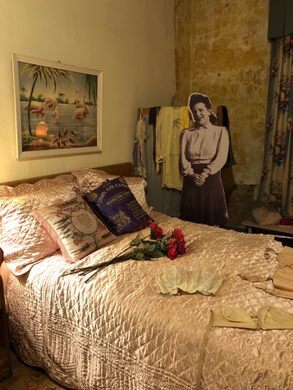

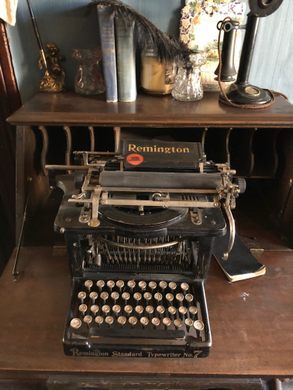
June 23, 2022
25 August 2022 - AQUEDUCT AT THE RED GATE - GERMANY
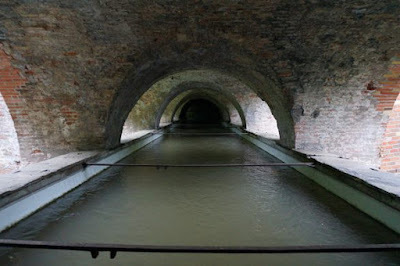
AQUEDUCT AT
THE RED GATE
- GERMANY -
G'day folks,
What appears to be an ordinary bridge is actually a rare aqueduct.This ancient bridge towards the old town region of Augsburg dates back to the 18th-century. Taking a descent into the moat allows visitors to view the massive aqueduct that once supplied the city with drinking water and power to move waterwheels.
This aqueduct is one of the more unique found in the city because the water transportation system is divided into two, designed to lead two channels into one aqueduct into the city. It was constructed this way so that one channel, fed by the nearby river Lech, could power waterwheels and could be used to dispose of waste. The other channel, fed by springs in the forest, provided drinking water as it was completely separated from the other channels.
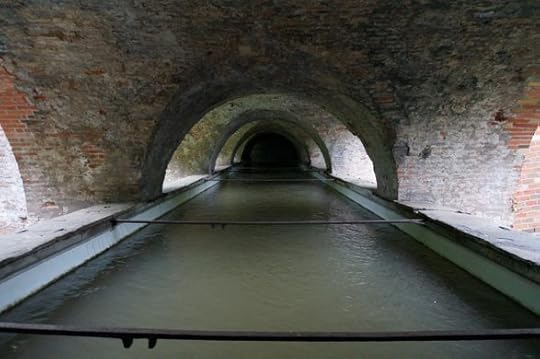
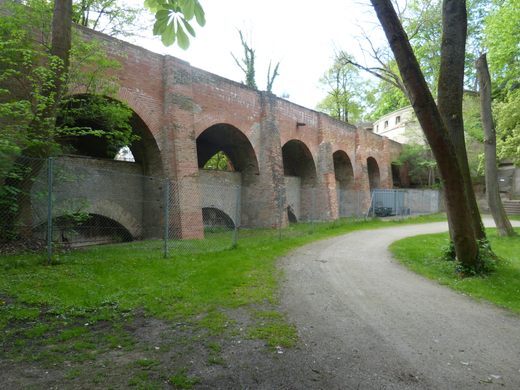

The aqueduct was originally comprised of wood but was replaced with the structure seen today around 1777 by Johann Christian Singer. The aqueduct also included a water tower that pumped water into the city’s public wells and private households with perfect pressure.
Today, the water in the canals is no longer used for drinking, and the two streams now flow together before reaching the aqueduct.
In 2019, the city’s water system was declared a World Heritage Site. It considers 22 different objects like water barriers, hydroelectric plants, in total 77 kilometers of canals and also the world’s first artificial canoe trail where competitions of the Olympic Games in 1972 took place.
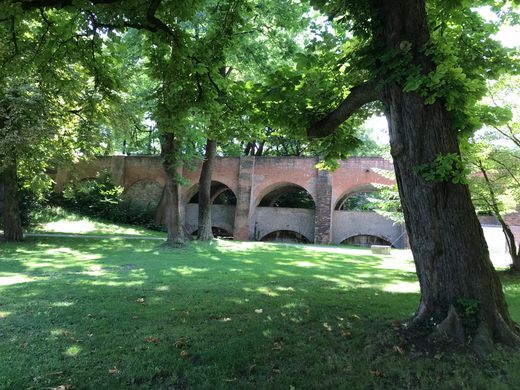
June 22, 2022
14 August 2022 - HITLER'S EXPLOSIVES FACTORY
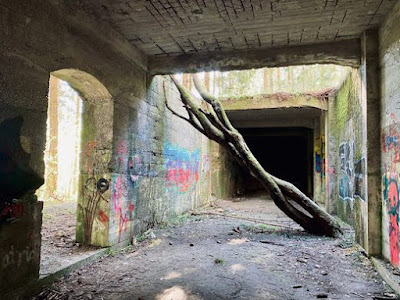
HITLER'S EXPLOSIVES
FACTORY
G'day folks,
Hidden in the forest are the crumbling, graffiti-covered remains of the factory where most of Germany's explosives were produced during World War II.During World War II, the Wehrmacht produced many of their explosives at a factory in the town of Bobingen in southern Germany. Run by the arms company Dynamit AG, the Fasan explosives factory was built in the 1930s. In 1939, a new facility was built in the forest near the village. The factory is long abandoned, but its crumbling walls still stand among the trees, where they are being slowly reclaimed by nature.
The original factory, known as Fasan I, was located on the eastern bank of the river Wertach. The secondary facility, Fasan II, was across the river in the western area, a railway bridge that can still be seen today was built. The two plants were scattered across the premises to avoid larger damages in case of an accidental explosion, and also to hide it from aerial reconnaissance by foreign adversaries.

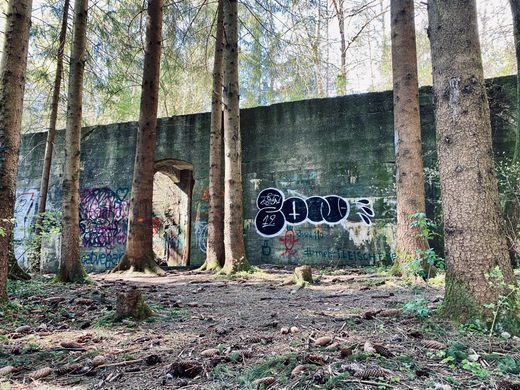
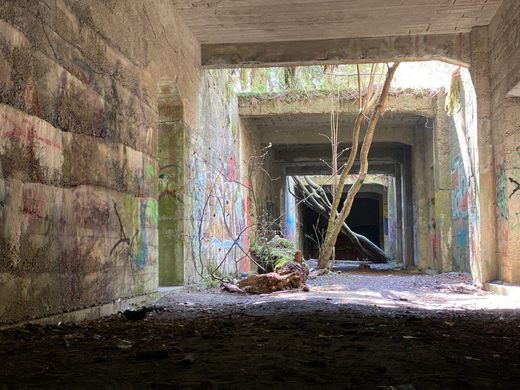

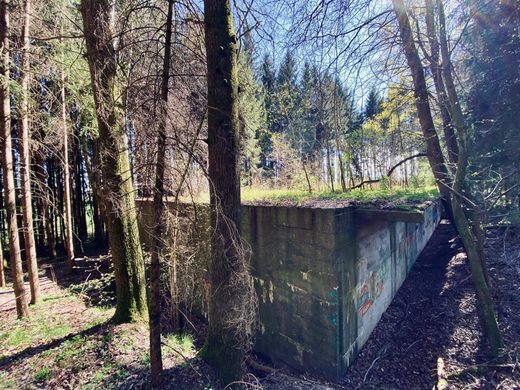

Fasan I consisted of 65 buildings and was originally only a testing facility designed to check out a large-scale industrial production of explosive materials, Fasan II consisted of only 25 buildings for the later mass production. During World War II, Fasan was used to produce hexogen, an organic compound that was used to create powerful explosives. In 1945, up to 300 tons of hexogen were produced per month at Fasan.
After the arrival of the U.S. Army in 1945, the factory was closed down. Today only one of Fasan II’s factory halls is publicly accessible—the remains of Fasan I are located on private property.
Since then, nature has taken over of the former factory hall: Trees grow up from the floor through the ceiling and cover the roof. Graffiti covers the walls and the explosive-resistant concrete partitions that divide the hall into three sections. The first two are partially exposed by daylight through the broken ceiling. For the third section a flashlight is required, especially as sometimes it is filled with ground water.
17 August 2022 - HITLER'S SECRET BUNKER IN NORTHERN FRANCE

HITLER'S SECRET BUNKER
IN NORTHERN FRANCE
G'day folks,
Underneath a chalk hill in France lies what Hitler hoped would be the underground launching base for a devastating new weapon.The Forteresse de Mimoyecques exists as a frightening example of the Führer’s ambition.
Hidden underground in the Northern French hamlet of Landrethun-le-Nord lurked a very grim threat intended to aim directly into the heart of the British capital. A subterranean bunker with a series of tunnels that connected to five shafts that inclined upwards, this secret complex was to be the placeholder for 25 new, experimental weapons that would all be pointing straight at London.
The V3 was a massive super gun, designed to be capable of firing explosive projectiles at the rate of 600 rounds per hour. The V3, codenamed Hochdruckpumpe (High Pressure Pump) was developed by Reich Minister of Armaments and War Production Albert Speer, and regardless of its prototype status, absolutely delighted Hitler. Giving the weapon’s development and employment his full support despite the absence of any firing trials, the Führer also had to consider the type of engineering base such a weapon would need to be consistently fired for any amount of time.
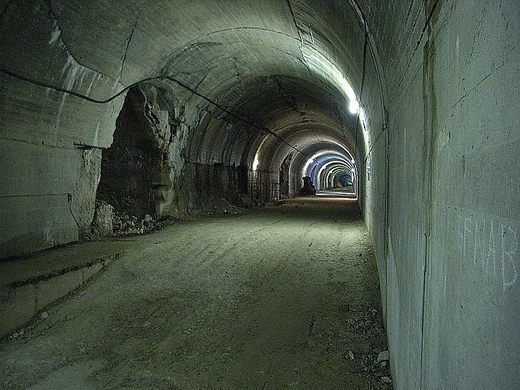
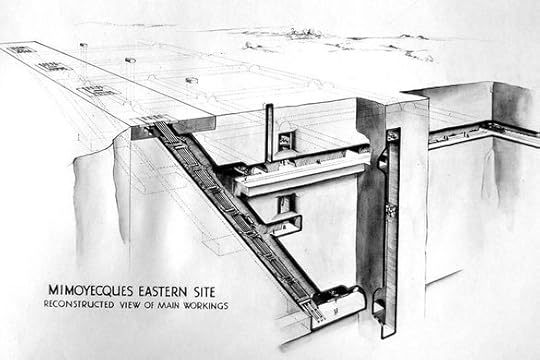
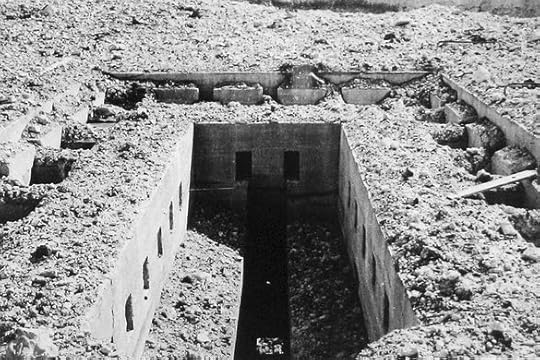
The solution presented itself as an underground launching base, supported by the already existing railroad. Ammunition storage galleries, five drifts capable of clustering 5 V3’s each, and a network of tunnels were installed once the hill was excavated, built by over 5,000 German workers as well as hundreds of miners and Soviet prisoners. Construction began in September 1943 and had a target date of March 1944, but relentless bombing from the Allies thwarted the deadline. French agents had an inkling that something was afoot in the hill by late 1943, but without the proper intelligence, they couldn’t get close enough to the site to uncover the goings-on, and the Germans went on diligently building.
However, the ambitious undertaking that could have easily devastated London wasn’t meant to be. The high-reaching project couldn’t withstand the relentless shelling, and when Mimoyecques became the focus of the Allied air forces, the site was so bombarded that the Germans were forced to desert what they were sure would be their game-changing advantage. By July, 1944, the tunnels had been collapsed and and the majority of the bunker was destroyed.
After several attempts by the British to safely demolish the substantially solid bunker (thoroughly pissing off the French who were not invited to discuss the site’s fate) the complex was finally closed off through demolition. Private owners eventually reopened the tunnels as a museum in 1984 by gaining access through one of the five drifts that was meant to hold the super guns. The museum serves as a memorial as well as a sanctuary to a large colony of rare bats.

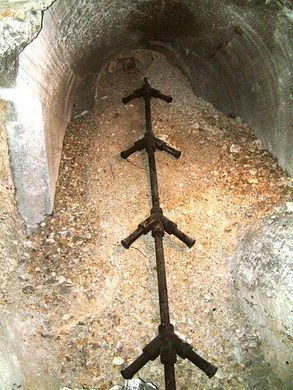
June 20, 2022
10 August 2022 - AMAZING CORVIN CASTLE - ROMANIA
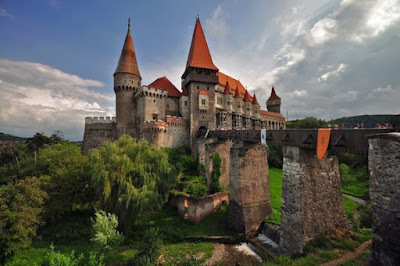
AMAZING
CORVIN CASTLE
- ROMANIA -
G'day folks,
This fairy-tale castle would make Dracula (who is said to have been imprisoned there) jealous.In the heart of Transylvania, one of Europe’s largest castles looks like it sits atop a rocky bluff with nothing but a thin bridge allowing access. But this is Corvin Castle, which looks like something straight out of a fairytale, largely because restorers thought that it should.
Built in the mid-15th century, the castle was the work of military leader John Hunyadi, who constructed the tall structure over the remains of a keep built by Charles I.
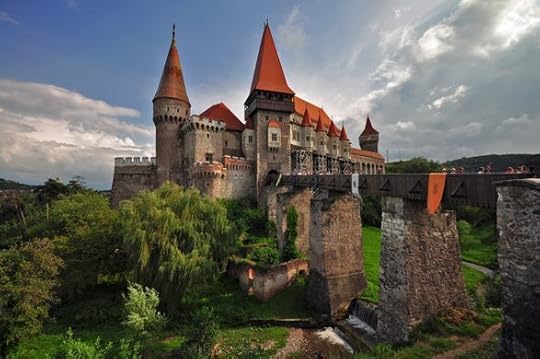
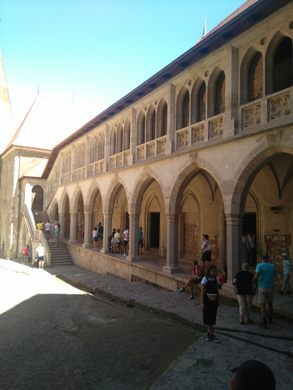
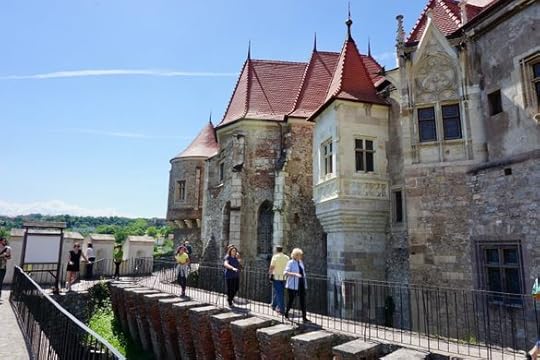
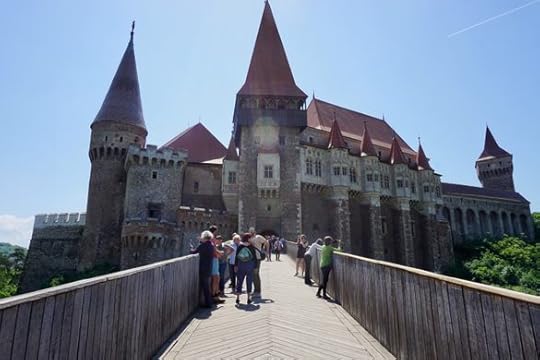
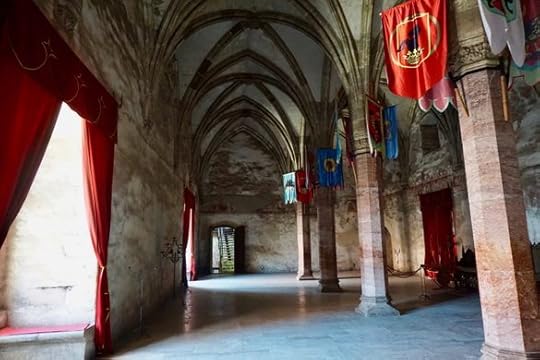
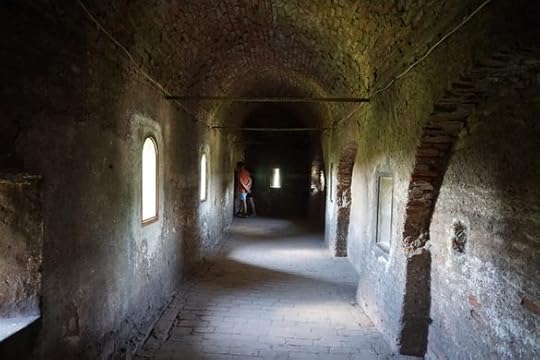
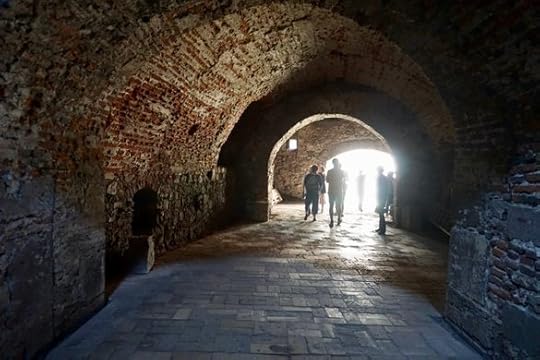
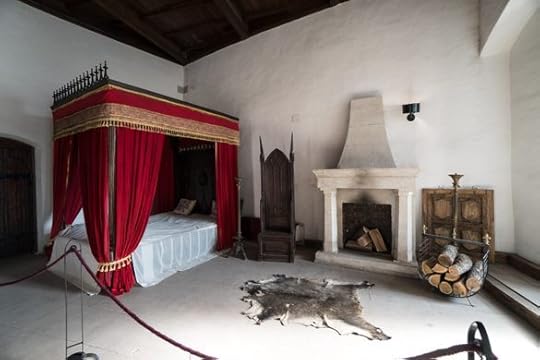
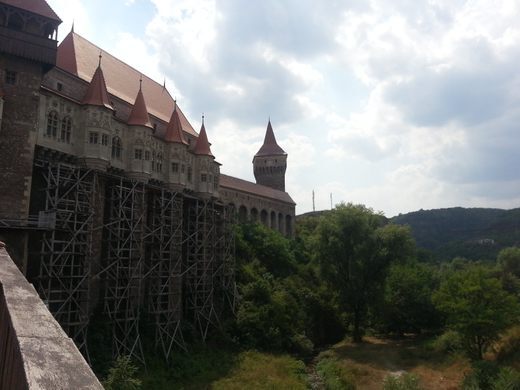
Corvin Castle is split into three large areas: The Knight’s Hall, the Diet Hall, and the circular stairways. Each of these three parts is surrounded by both circular and rectangular towers that were used for both defense and as a prison.
The elaborate architecture was designed in a rich gothic style that accentuates the already impressive structure. The castle was kept in regal condition during Hunyadi’s lifetime, but after he died, the castle fell into swift decline.
It was not until the 17th century that there was more interest in restoring this medieval castle. As the restoration work began, the workers redesigned the castle to reflect what they considered a gothic castle should look like, which explains much of its currently fanciful look.
A number of legends are associated with the castle. Though this is likely untrue, tourists are told that Vlad the Impaler spent some seven years in the dungeons of Corvin Castle, a stay which resulted in his eventual madness.
24 August 2022 - INVERTED BOAT HOUSES - FRANCE
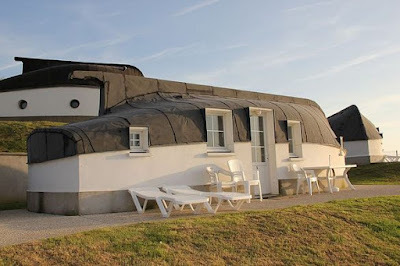
INVERTED
BOAT HOUSES
- FRANCE -
G'day folks,
These rustic holiday homes are made from discarded fishing boat hulls.A holiday destination in Equihen-Plage, in the North of France, is reviving an old tradition of building houses out of discarded boat hulls. In the past, this type of unconventional abode was made by poor fishermen and, in some cases, their widows.
The hulls, after receiving a waterproof coating of tar, become the roofs. They’re then raised on small brick-and-mortar walls that only allow for a small bit of headroom. Doors and windows are then cut out from the hulls. The interiors of these houses, which are typically single-room, are quite dark and cramped.

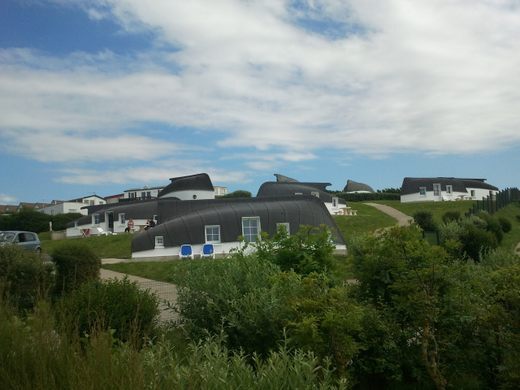
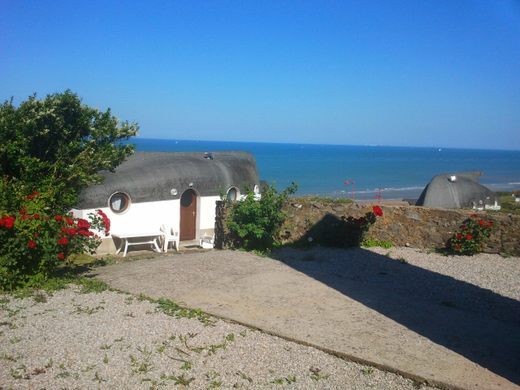
This kind of house was mainly used by fishermen in the 19th and 20th centuries as makeshift shelters or cheap homes. Today, they serve as a niche tourist attraction.
Most of the original boat houses were destroyed during World War II, and it seemed that this piece of coastal heritage would be lost forever. But in the 1990s, interest in the houses resurged, leading some to reconstruct inverted boat houses and use them as rustic holiday accomodations.
June 19, 2022
16 August 2022 - WEIRD HOUSEBOATS OF SHOREHAM

WEIRD HOUSEBOATS
OF SHOREHAM
G'day folks,
Welcome to a motley, fantastical agglomeration of unlikely houseboats along the Shoreham-by-Sea riverbank.
Normality ebbs away as you edge along the river path revealing a hodgepodge of has-been boats restored and reimagined.
Shoreham-by-Sea is a small beach town at the mouth of the River Adur that is often overlooked thanks to its vicinity to more popular weekend destinations like Brighton or Littlehampton — which is all the better for the motley, fantastical agglomeration of unlikely houseboats that have accrued on the riverbank.
What has grown along the “Bloomin’ Adur” is a unique bridge between land and sea of cobbled treasures made from another’s trash. The obscure houseboat art collective has been growing since the end of World War II, when decommissioned military ships were retired to Shoreham’s tidal mud flats. Today there are some 50 to 60 boats to be found at the site and, since the structures are waterborne, few building regulations apply, meaning owners can unleash their greatest structural/architectural/artistic fancies in the midst of a wild, natural setting.
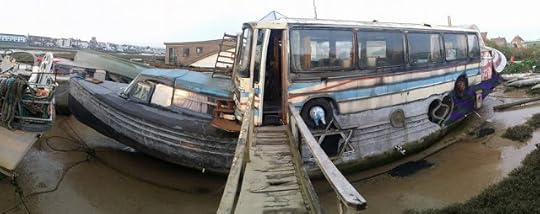
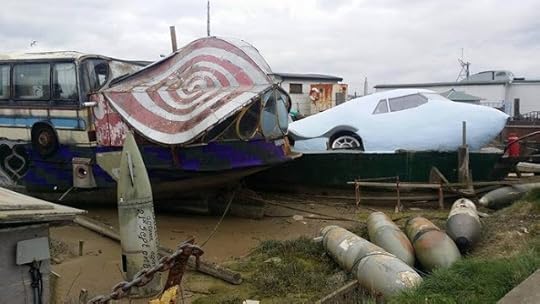
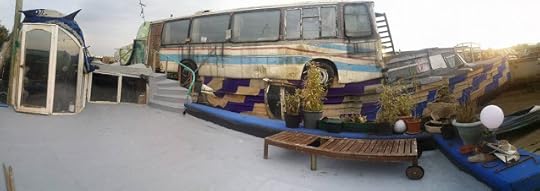
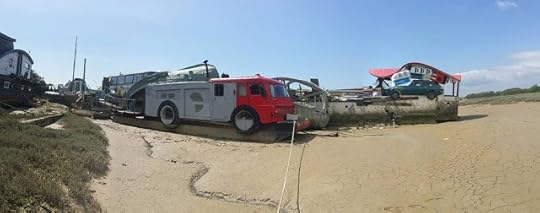
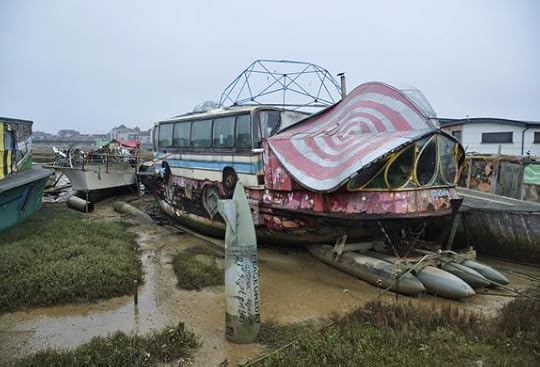

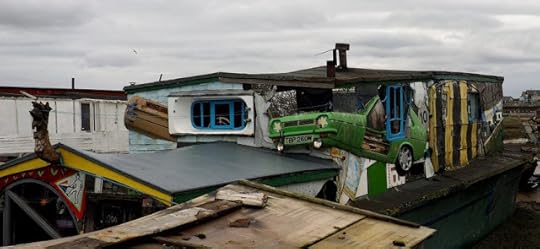
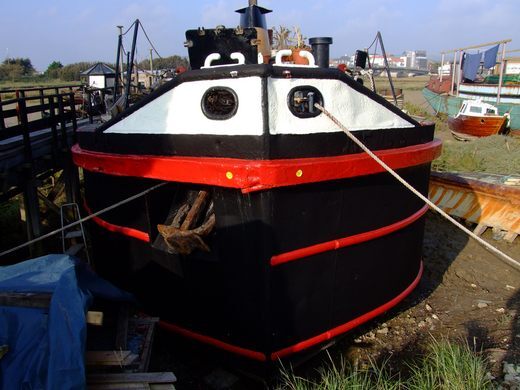
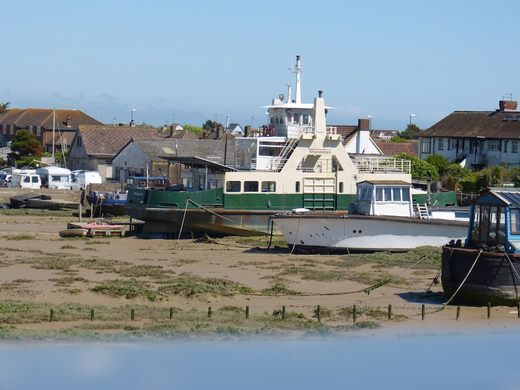
The result is a labyrinthine dream afloat — a gaudy Gaudi vision made with love and a lot of hard work. Some highlights include: the Verda, which is made of parts and portions of seven or eight different boats, as well as two buses and a Reliant Robin; the Dodge, which incorporates an old fire engine and is available for rent on Airbnb, making it one of the most magically odd apartments ever conceived; the Clive, a former World War II Motor Torpedo Boat (with an aeroplane fashioned on top, of course) now home to a huge workshop and pop-up cafe; and the Fische, a mid-century German minesweeper that — having been designed for a crew of 30 — now provides its owners with more-than-ample living space.
The Verda, Dodge, and Clive (as well as five others) are all owned by Hamish, a creative crafter of second-hand materials as well as a leading light in the Shoreham houseboat community. The Verda is not only his home, but also includes a community social space that hosts meditation, yoga, film nights, live music, markets, healing sessions, and even a monthly pub night. Hamish is also the guy to talk to if you want to volunteer to get involved in the ongoing creation and maintenance of a unique neighborhood that seems to exist outside of familiar reality.



